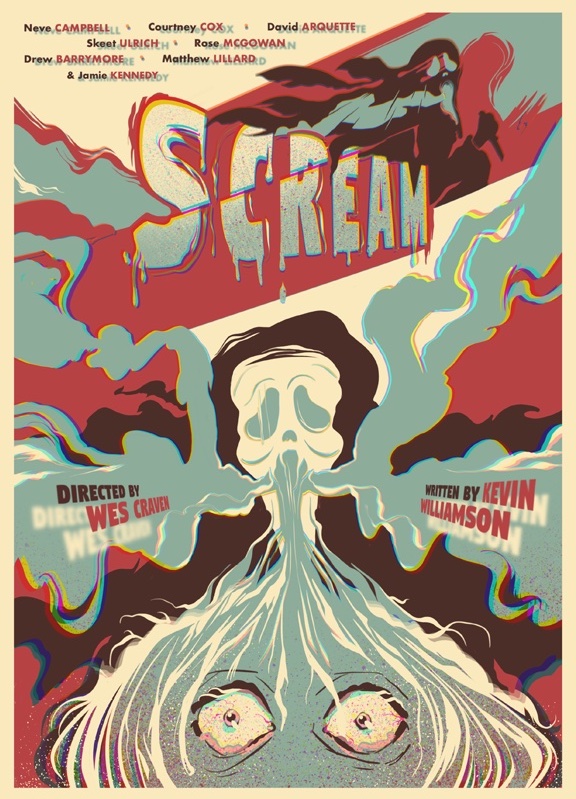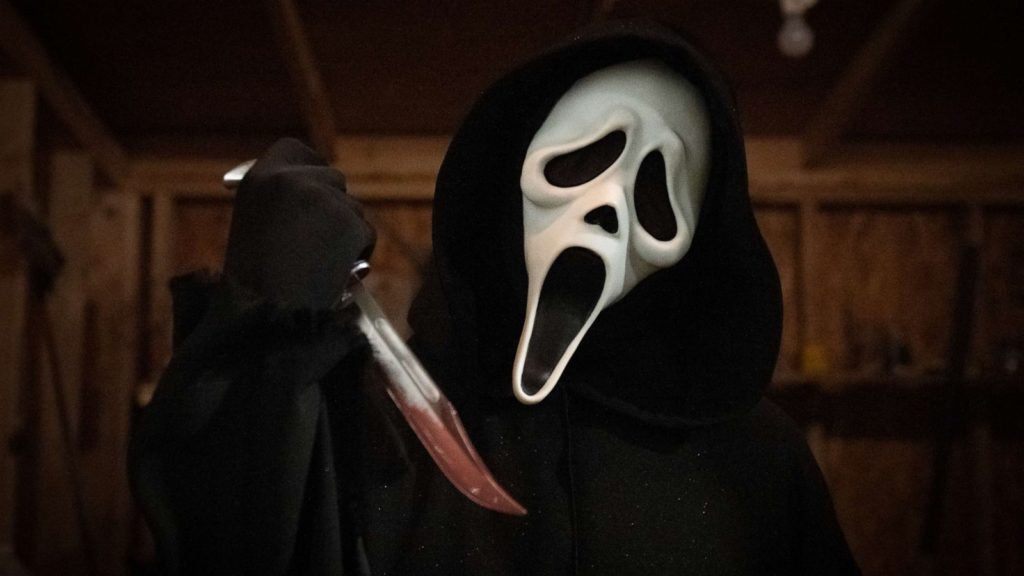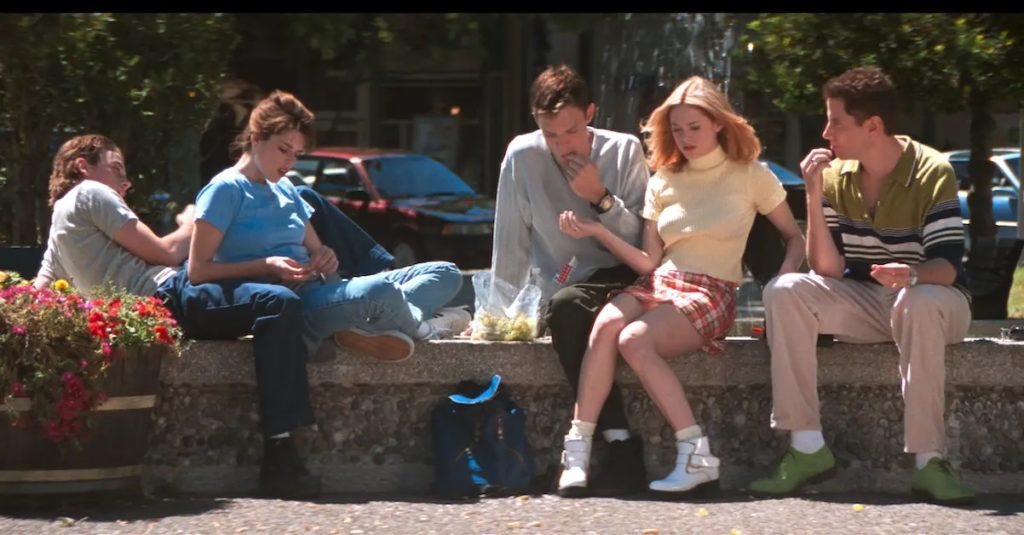|Jake Rudegeair|

Scream plays at the Trylon Cinema from Friday, October 6th, through Sunday, October 8th. Visit trylon.org for tickets and more information.
What’s your favorite scary movie?
I don’t have a favorite, really. More like a group of honorable mentions that rearranged my brain. Psycho made showers much less relaxing, for instance. The Exorcist spun my head right ‘round. A Nightmare on Elm Street gave me nightmares on my street for an entire calendar year of my life (six is too young for Freddy Krueger—and Norman Bates, for that matter). You’ll be glad to know that Freddy’s spell was finally broken when he showed up in my dreams wearing a tuxedo, asking in a polite British accent if I’d prefer the mac and cheese or the hamburger. My subconscious was indifferent to him after that.
Our “favorite” horror movies have a special power, especially if they caught us at an early age. They stir up primal fears, but also indulge in our penchant for the absurd. In turns delightful and disturbing, they bound back and forth over the line between discomfort and sick pleasure. It’s a disorienting canon for a six-year-old.

Then there was Scream—a film that sliced into mid-90s culture like a hot buck knife through pig’s blood. For a lot of us overexposed millennials, it was the first time we’d seen a movie about movies—the first time we even realized that was a thing you could do. It was scary as hell, with compelling characters and wicked tension. But it was hilarious too. It skewered and deconstructed films we grew up on. For me, it still marks the beginning of the post-irony age in Hollywood. The lines between sincere and satirical were smeared into a compounding trend that would lead us all the way to the anxious present, complete with the Barbie movie, Borat, and Kim Kardashian.
Sounds like Kevin Williamson and Wes Craven have a lot to answer for. Williamson penned the fabled screenplay during a quality-horror drought: “Horror movies were in a big slump back then [1990s]. The slasher films of the late ’70s and ’80s had sort of petered out. No one was really making great horror films.”1
He wanted to reinvigorate the genre with something we hadn’t seen before. Funny, then, that he drew on one of the greatest horror classics of all time in Psycho, opening his film with a singular movie star who won’t live to see act two. “I wanted it to be this big, huge Janet Leigh moment. And then when she dies, you’re like, ‘Wait a second. Wasn’t she on the poster? Wait. What’s going to happen next?’”2
Williamson and Craven were training the audience from the jump, with referential red herrings, burnt popcorn, and bloody shock. This wasn’t your mom’s scary movie.
But beyond Scream’s delightful satire and dualistic tone, there’s something else coming through the static. You can feel a concern about the cultural appetites of the time, and the artistic diet American kids were being raised on. What does a film like Psycho do to a sociopathic bully with mommy issues? While I don’t think the screenwriter even entertains the thought of censorship (although in a post-ironic world, it can be hard to tell), I do think it’s raising an enduring question: what do movies do to us? Williamson seems to think that we should bend and subvert, interrogate the genre at the same time we’re playing in it—work out our anxieties with suburban monsters and traumatized heroines.

Maybe the tone hasn’t aged so well. Just look at Twitter (actually, please don’t). But at the time, it was electric. Maybe because it’s brought to life by one of the best teen movie casts of all time. Neve Campbell has the perfect trifecta of facial expressions locked in: shock, determination, and a dash of amusement. Matthew Lillard is vibrating off the screen, it’s surreal. Skeet Ulrich’s pinched mouth and stabby, dangling bangs are deeply disturbing to this very day. Rose McGowan brings depth and verve to a character who, in lesser hands, would be thin and forgettable. And of course, Jamie Kennedy’s Randy is an iconic early example of the tertiary-character-as-audience-member. And Drew Barrymore. That’s the whole sentence.
Scream hits differently now, but it holds up. It’s sharp-tongued awareness wrapped in blood-soaked crew-neck sweaters. I could belabor its flaws, but it’s the kind of movie that would welcome a good send-up. And maybe its post-ironic trailblazing is another example of an influential film that half the population took the wrong lessons from. It’s not enough to just pop the tongue in the cheek and ignore the call. Sometimes you need to ask, “Who’s there?”, even if it is a death wish.
Edited by Finn Odum
- Siegel, Alan. “Your Favorite Scary Movie: The Oral History of ‘Scream.’” The Ringer (December 20, 2021). https://www.theringer.com/platform/amp/movies/2021/12/20/22840882/scream-oral-history-wes-craven-neve-campbell-drew-barrymore. ↩︎
- Siegel, Alan. ↩︎
